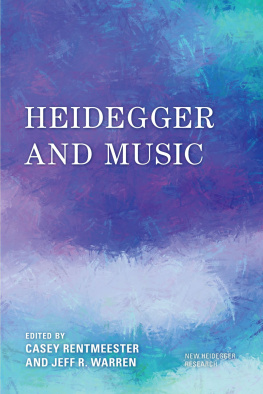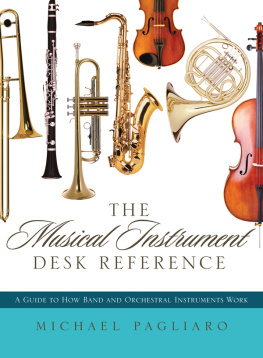AFRICAN MUSIC
A Peoples Art

FRANCIS BEBEY
AFRICAN MUSIC
A Peoples Art
FRANCIS BEBEY
Translated by Josephine Bennett

PHOTO CREDITS:
Afrique-Photo: p. 15, 18, 127
Afrique-Photo-Duverger: 148
Afrique-Photo-Fivet: VIII, 51, 70, 77, 107 (top)
Afrique-Photo-Naud: 4, 76, 96
F. Bebey: 95
Coopration: 3, 5, 12, 14, 21, 25, 28, 35, 36, 37, 42, 55, 65, 67, 69, 73, 78, 85, 89, 97, 99, 106, 107 (bottom), 108, 121, 123, 133, 135, 143, 144, 146, 147
K. Corpel: 138
C. Duvelle: 7, 27, 45, 49, 52, 63, 72, 79, 81, 94, 105, 111, 114
Hoa-Qui: cover, 10, 43, 59, 61, 74, 75, 86, 87, 93, 103, 109, 117, 129
Muse de lHomme, Paris: 13, 110, 118, 124, 125, 131
Muse de lHomme-J. Oster: 137
Production Mouren, Niamey: 32
UNESCO-Cart: 90
UNESCO-de Clerk: 141
UNESCO-Daliot: 53
UNESCO-Pittet: 9
UNESCO-F. Pouey: 19, 23
UNESCO-E. Schwab: 39, 101
M. Vuylstke: 11, 47
Title of the original edition:
MUSIQUE DE LAFRIQUE
HORIZONS DE FRANCE, 1969
English translation 1975 by Lawrence Hill & Co., Publishers, Inc.
First U.S. Edition, March, 1975
Published by Lawrence Hill
Books Brooklyn, New York
An imprint of Chicago Review Press, Incorporated
Chicago, Illinois
Printed in the United States of America
ISBN 1-55652-128-6-paper, previously 0-88208-050-4
Contents
Introduction
THE INTENTION of this book is to introduce the reader to the world of traditional African music. It is a world which until now has attracted scant public attention, partly because of its apparenty highly-specialized nature, but also because it has previously been described in terms that have tended to imprison it inside the covers of scholarly treatises instead of making it accessible to all men. And yet, African sculpture and painting are at last beginning to move beyond conference halls frequented by Africanists to attract an ever-growing and increasingly enthusiastic public. Why then should musican unrivaled black African artbe content with a mere handful of followers drawn from the ranks of those in search of exotic adventures or unusual rhythms and timbres?
African music is fundamentally a collective art. It is a communal property whose spiritual qualities are shared and experienced by all; in short, it is an art form that can and must communicate with people of all races and cultures and that should enjoy the ultimate fate of all the great currents of human thought to make its mark on the present and the future, while bringing a new breath of life to all mankind. In order to do so, it must first be made accessible to all men everywhere; it must be explained to them and allowed to take root, germinate and flower in their cultural understanding. We are expounding on a process, not of popularization, but of dissemination, an investment programme with high hopes and expectations.
Our motive in undertaking this initiation into traditional African music is not merely that of a connoisseur bent on sharing the rare fruit of a genuine passion; rather, we are convinced of the need for other people to explore this unknown and exciting world. This is a world where we can learn more about mankind, a world pulsating with spiritual forces that unashamedly lays bare its inner truth and reveals the threshold of human happiness. The tropical forest is not populated by miserable savages, for, as African music can show us, such creatures do not exist. Our aim in writing this book is to convince the reader of this fact.
Literally dozens of books could be written on the subject of music, but they would be of little use without illustrations to support their respective texts. In works of this kind, illustrations usually take the form of musical transcriptions. We have ruled out this method which would be meaningless for the many readers who cannot read music. In any case, musicologists have not yet found an accurate and satisfactory method of notation for African music. Instead, we have chosen to refer the reader directly to the music itself, as it is recorded.
We have tried to limit our choice of records to a minimum in order to avoid overwhelming any reader who may feel drawn to acquire some of them. We sincerely hope that he will feel so drawn, not only in order that he may gain a wider understanding of our subject, but more importantly, so that he will have his own personal documentation and points of reference.
In addition, we have included a selective discography at the end of the book that will give a comprehensive idea of what commercial catalogues have to offer. Finally, there is a very small, basic discography containing those records we consider indispensable for a first contact under optimum conditons.
Most of the records mentioned can be obtained from specialized dealers in the United States or in the United Kingdom. It seemed futile to include material that is hard to find, such as tape recordings or records that are either obsolete or not readily available, particularly as many such recordings are not of the highest technical quality. The high-fidelity quality of present-day commercial recording undeniably enhances appreciation of the music itself.
Before we plunge into the heart of our subject, we should like to thank a number of organizations and individuals whose efforts to preserve and diffuse traditional African music have, in recent years, been marked by the production of excellent records. Without these records this book could not have been furnished with suitable examples. In particular, we wish to thank the Muse de lHomme in Paris and Mr. Gilbert Rouget; the O.R.T.F. (the French National Radio and Television Broadcasting Organization); OCORA Records, Paris and Messrs Charles Duvelle and Tolia Nikiprowetzkythis organization has the largest catalogue of traditional African music in the world; Unesco and those of its experts who produced the records in the Anthology of African Musica series of ten albums of great interest; and Folkways Records in the United States. To all of them we offer our warmest encouragements for an even greater output of continuing high quality.

A man and his music dedicated to the service of all men; a people and Its music for the happiness of everyone .
Expression of Life
AUTHENTIC AFRICAN musicthe traditional music of the black peoples of Africais little known abroad. The non-African listener generally finds the music strange, difficult, and unattractive; therefore, he concludes that it is not of interest. This is by no means the case. However, the study of African music demands time and patience. Familiarity with its environment certainly helps and the student is invariably rewarded by finding this music extremely attractive.
Over the past thirty years, films, photographs, and records have brought certain aspects of African music, its musicians, and its cultural context to the attention of Western audiences. Unfortunately, however, the aim of most film producers and record companies is commercial success and thus they have tended to emphasize the exotic and the unexpected at the expense of the real substance. By so doing, they have rendered a serious disservice to African cultures generally and to music in particular. The initial curiosity of a Western audience can be followed all too easily by contempt for a way of life that is so unlike their own and by an inability to appreciate the music that seem to them to be so much dissonance and noise.
Next page













